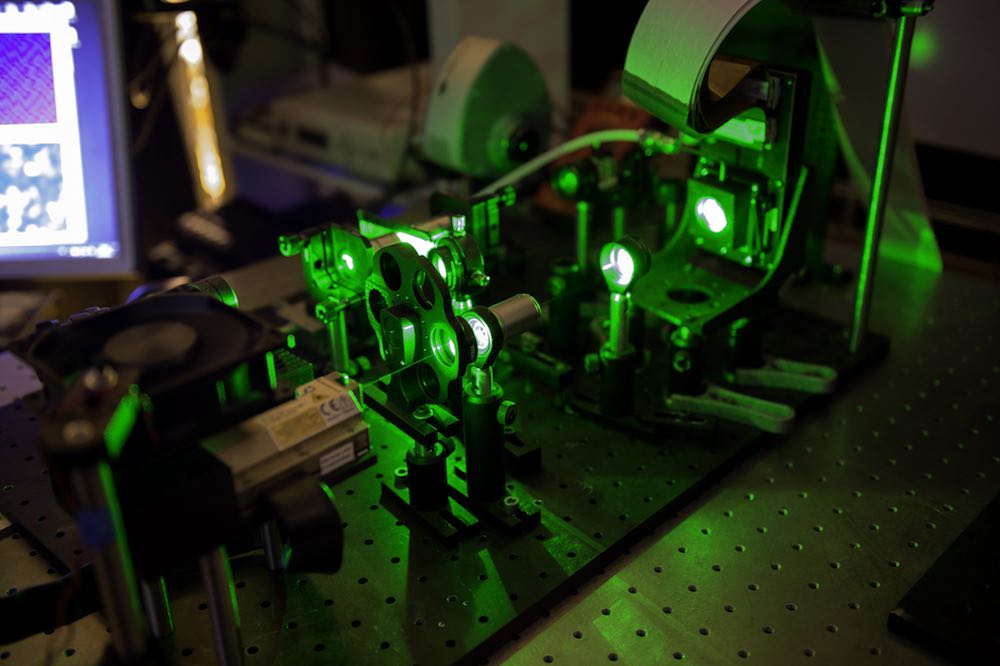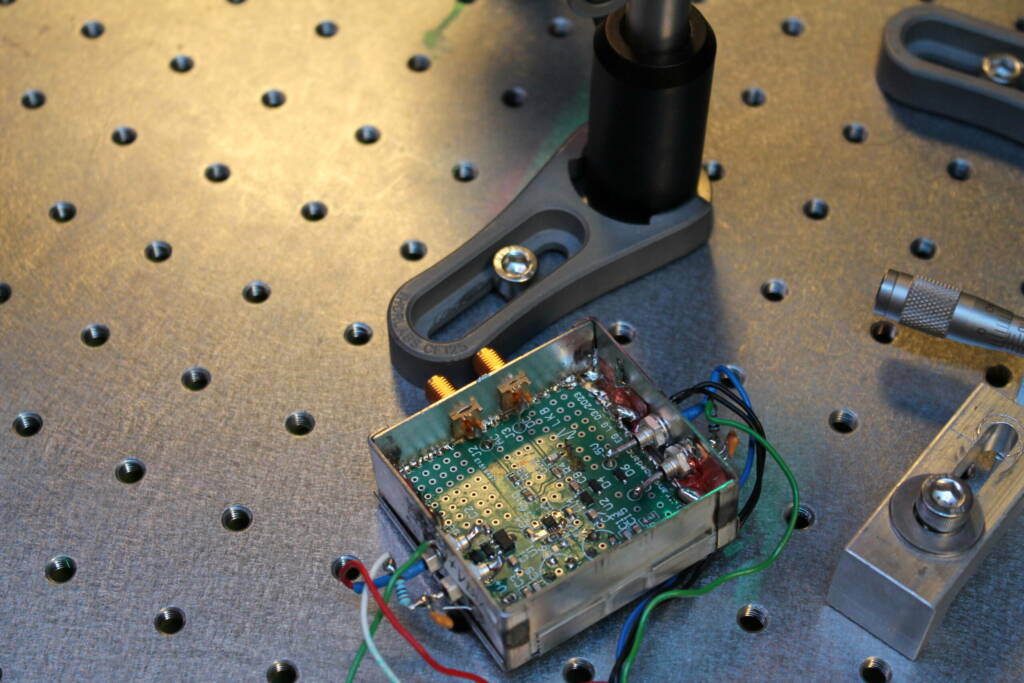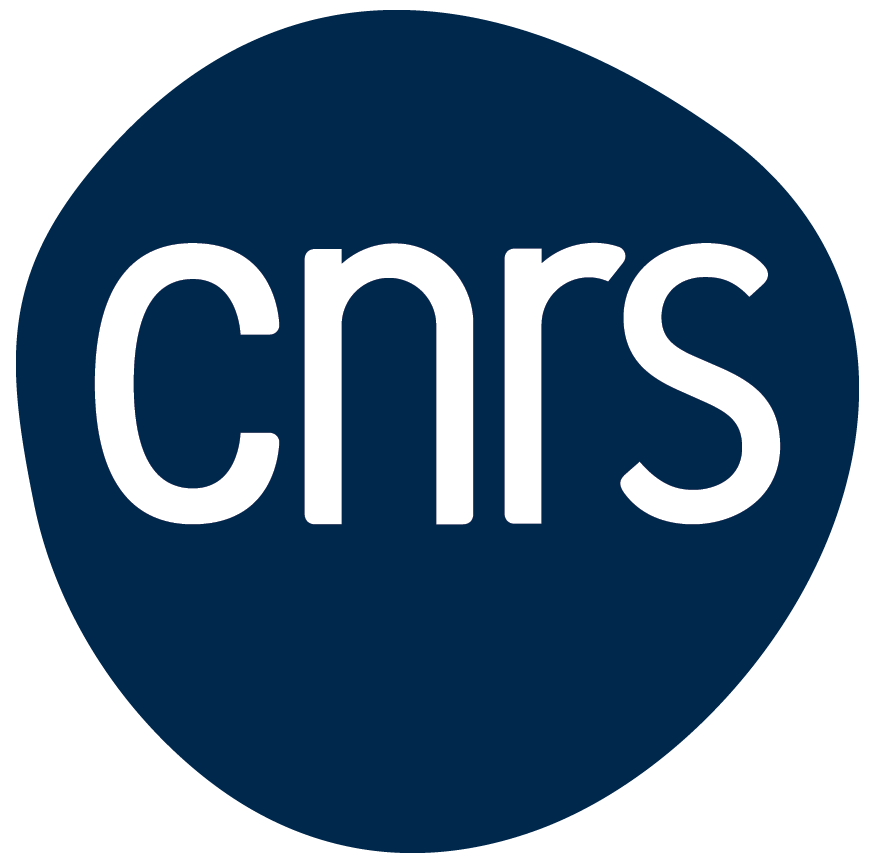A new ultra-fast, energy-efficient optical coprocessor for big data
Sylvain Gigan, a member of LKB, is one of the six inventors behind the LightOn project.

Sylvain Gigan, together with five other inventors—Laurent Daudet (Institut Langevin), Florent Krzakala (Laboratoire de Physique Statistique), Igor Carron, an independent researcher and consultant specializing in Machine Learning, Alaa Saade, a PhD student at ENS, and Angélique Drémeau, a postdoctoral researcher at CNRS—has developed an alternative to the generic processors (CPU) and specialized coprocessors (GPU) typically used in the analysis of large-scale data (big data). Their patented technology is based on the development of devices that control light propagation, which could be used as ultra-fast coprocessors for data processing.
The solution proposed by LightOn aims to leverage a new type of algorithm, which has been rapidly developing in recent years, based on random projections of data. “Mixing” data in a controlled and reproducible manner helps highlight the relevant information, meaning it retains the intrinsic structure of the data while overcoming its large variability. For example, the result of these random projections could be used as input for very simple classification algorithms.
The current limiting factor for the rapid adoption of such algorithms is the computation of these random projections: the solution provided by LightOn is to perform this operation optically, without numerical computation, and almost instantaneously, with minimal energy consumption.
This technology can be implemented on data sizes that are impossible to process conventionally with the most powerful GPU coprocessors.
LightOn’s technology therefore potentially provides an alternative to generic processors (CPU) and specialized coprocessors (GPU) to address the exponential growth in data volume. Due to its low power consumption compared to CPU/GPU-based solutions (just a few watts instead of several tens or even hundreds of watts), this technology would also allow statistical learning algorithms to process very large datasets (for example, in genomics or for connected objects), while helping to mitigate the explosion of energy costs associated with processing this data. Finally, LightOn’s technology could also offer a solution to current issues in data security and anonymization.
This project is based on a long-standing interdisciplinary collaboration between the co-inventors in the field of optical data processing:
- Sylvain Gigan, professor at UPMC at the Laboratoire Kastler-Brossel (UPMC/CNRS/ENS/Collège de France), is an expert in optics in complex media.
- Laurent Daudet, professor at the University of Paris Diderot at Institut Langevin (ESPCI/Paris Diderot/UPMC/CNRS/INSERM), is a specialist in signal processing.
- Florent Krzakala, professor at UPMC at the Laboratory of Statistical Physics (ENS/CNRS/UPMC), is an expert in statistical physics applied to algorithms.
- Igor Carron, researcher and independent consultant specializing in Machine Learning.
Together, with the help of Alaa Saade, a PhD student at ENS, and Angélique Drémeau, a postdoctoral researcher at CNRS, they explored how optics in complex media could benefit from signal processing techniques. They demonstrated that optics could enable the simple implementation of a particularly difficult computational operation for statistical learning, which is challenging to implement in silico: random mixing, the idea at the core of the valorization project.
CPU: Generic processors (CPU) refer to the central processing unit or main microprocessor of a computer.
GPU: A GPU coprocessor is an integrated circuit on a graphics card that handles the display functions of computers, among others.
Ref : Brevet EP 15305165, Digital-data mixing apparatus and digital-data processing system, déposé le 4 février 2015 under the Fondation Paris Sciences et Lettres, the ESPCI INNOV, the université Paris Diderot – Paris 7, the CNRS, and Mr. Igor CARRON.
Read also
CNRS Recruitment – Join the LKB
External Recruitment for Researchers (M/F)
Nathan Goldman is among the Highly Cited Researchers
Clarivate list



